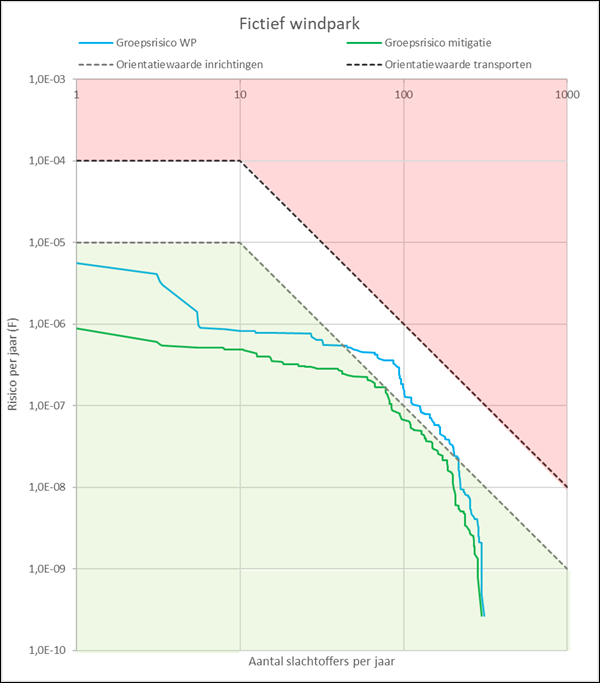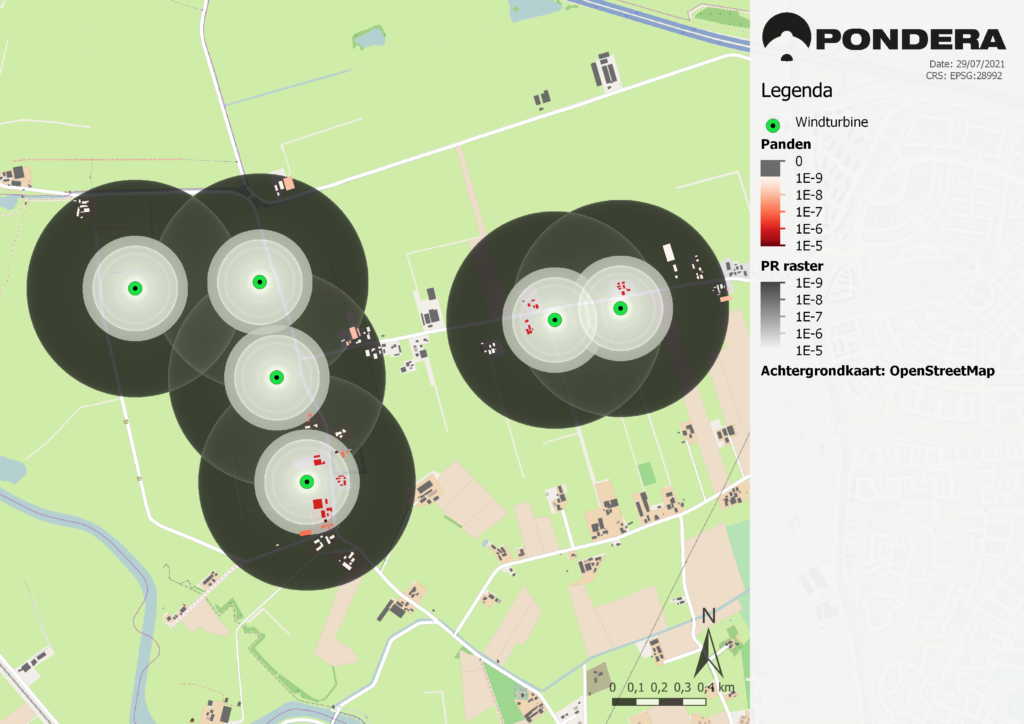Fortunately it is a rare occurrence, but wind turbines can fail in such ways that they pose a risk to the safety of the surrounding area. Imagine the damage caused by a (part of a) rotor blade breaking off, the tower collapsing or the nacelle falling down. Although incidents almost never occur, research into the risks is carried out before a turbine is installed. The analysis, calculation and evaluation of these risks fall under the external safety category.
In the development phase of a wind farm — during the environmental assessment of wind turbines — extensive research into external safety is carried out. The Dutch Ministries, RIVM and other interested parties have jointly stipulated that such analyses must be carried out using the calculation rules contained in the Wind Turbine Risk Assessment Manual (handleiding risicobeoordeling windturbines). The manual is also included in the general calculation package for all external safety matters, such as Module IV of Environmental Safety of the RIVM. Less mathematical and a more general consideration of external safety can be found in the Risk Zoning Manual for Wind Turbines (handreiking risicozonering windturbines) issued by the RIVM. This manual offers an overview of legislation and policy concerning the risks of wind turbines for the surrounding area.
In a short series of posts like this one, we will discuss various relevant topics related to the external safety of wind farms and wind turbines, such as the new IEC working group for the establishment of international calculation rules. We will also take a closer look at failure scenarios and explore the definitions of “vulnerability”.

In this first post we would like to address current affairs: the Nevele ruling and the Council of State’s decision on the Wind Farm Delfzijl Zuid Expansion. This recent ruling states that the wind turbine regulations in the Activities Decree are no longer applicable as a consideration framework for the relevant authorities. These ‘wind turbine regulations’ must now be determined for each project until the moment the national government has carried out an environmental impact assessment of the wind turbine regulations in the Activities Decree. Consequently in the meantime, each relevant authority can employ self-chosen standards for the assessment of wind farms. This also implies that the method of setting standards and the level of the standards for external safety must be assessed and determined for each individual project. Whereas it used to be sufficient to assess according to fixed standards, the situation must now be outlined in detail. After establishing the risks at the exact location and weighing up the various interests, standards can then be determined.

In order to provide the relevant authorities with sufficient location-specific and detailed information, Pondera has developed a calculation model that provides detailed insight into the external safety risks of wind turbines in a planning area. The model is no longer limited to assessing the location of the PR contours, but also examines the risks to groups of people in the vicinity of the project, based on the expected number of people. This calculation model is suitable for both small and large scale use and provides insight into the specific emerging risks for people, buildings and infrastructure. By displaying the detailed information on a map, the wind project can be better integrated into the local environment and the effects of mitigation measures can be clarified. The model can also process a variety of assumptions that allow us to quickly and directly provide insight into the effects of different wind turbine types, varying wind turbine positions or other changes. With the help of these new techniques, the relevant authority can make a conscious and more accurate assessment of the impact of wind turbines in the planning area.









